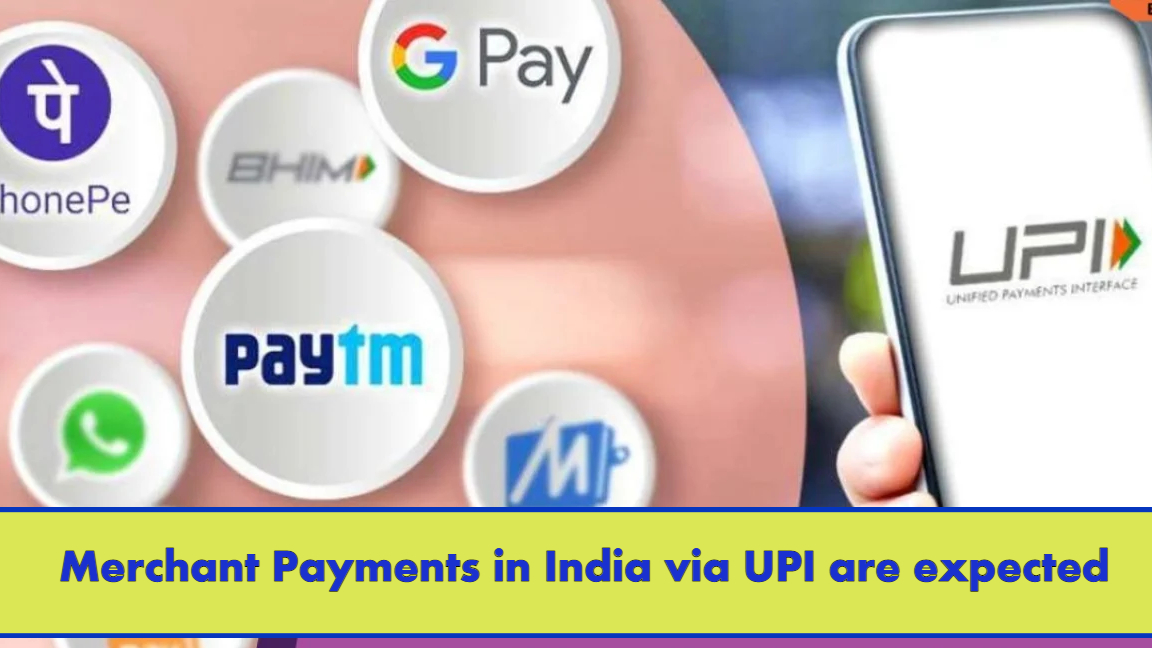News
Merchant Payments in India via UPI are expected to reach $1 trillion by FY26
Published
1 year agoon

According to a report by Bain & Company, merchant payments over the Unified Payments Interface (UPI) in India are anticipated to increase by 40 to 50 percent to reach $1 trillion by the fiscal year (FY) 2026
By FY26, it is anticipated that India’s merchant payments made through UPI will total $1 trillion.
According to a report by Bain & Company, merchant payments over the Unified Payments Interface (UPI) in India are anticipated to increase by 40 to 50 percent to reach $1 trillion by the fiscal year (FY) 2026. Increased consumer awareness, increased merchant UPI adoption, new payment features like UPI Lite and UPI 123 Pay, and the addition of international payment lanes on the domestic payment railroad will all contribute to this growth. According to the National Payments Corporation of India (NPCI), UPI was used to clear nearly $40 billion worth of merchant transactions in just March 2023. The industry’s payment run rate has already surpassed $500 billion.
Read Also:- Former President Medvedev stated that there is no other option but to kill Zelensky,comparing him to Hitler.
UPI and Mobile Wallets to Account for 28% of India’s $3.2 Trillion Digital Payments Market in FY26:
UPI and mobile wallets will account for 28% of India’s $3.2 trillion digital payments market in FY26, up from 11% in FY22, while cash will drop to 48% from 69% in FY22 as all digital payment methods, including credit cards, debit cards, and buy now, pay later, increase.
Credit card spending in India will more than double to $280 billion by FY26:
According to a report by Bain & Company, credit card spending in India is expected to more than double to $280 billion by FY26 from its current level of around $100 billion. A significant portion of this gain will be accounted for by increased spending on newly issued credit cards. According to the Reserve Bank of India, there were 85 million credit cards in circulation as of March 2023. The sources of growth in new credit cards will be Tier-2 sites, new fintech and consumer tech partnerships for co-branded cards, and an overall opening up of supply.
Government payments and subsidies will be reduced, and premium merchants may be required to pay a specific MDR for UPI payments:
According to Bain & Company, government payments and subsidies will decrease over the next three to five years, resulting in market forces controlling merchant payment pricing. For UPI payments, premium merchants, for example, may pay a specific Merchant Discount Rate (MDR). By then, payment service providers will have developed alternative revenue streams. Initially positioned as online payment providers, providers such as Razorpay, Cashfree, and Paytm have all established offline operations as well, providing their users with an omnichannel payment experience.
Fintech and Banks Must Adapt to Survive in India’s Fintech Era:
Banks in India will need to adapt as the fintech era progresses in order to remain competitive. Banks will need to investigate full-stack merchant solutions and add new customers to increase the number of credit card holders. According to the study, “commercialising partnerships with a select group of non-banks to expand reach and improve capabilities.” To accelerate their time to market, fintech companies must establish compliance departments, diversify their revenue streams, and strengthen their relationships with banks and NBFCs.
Credent TV Editorial Team
